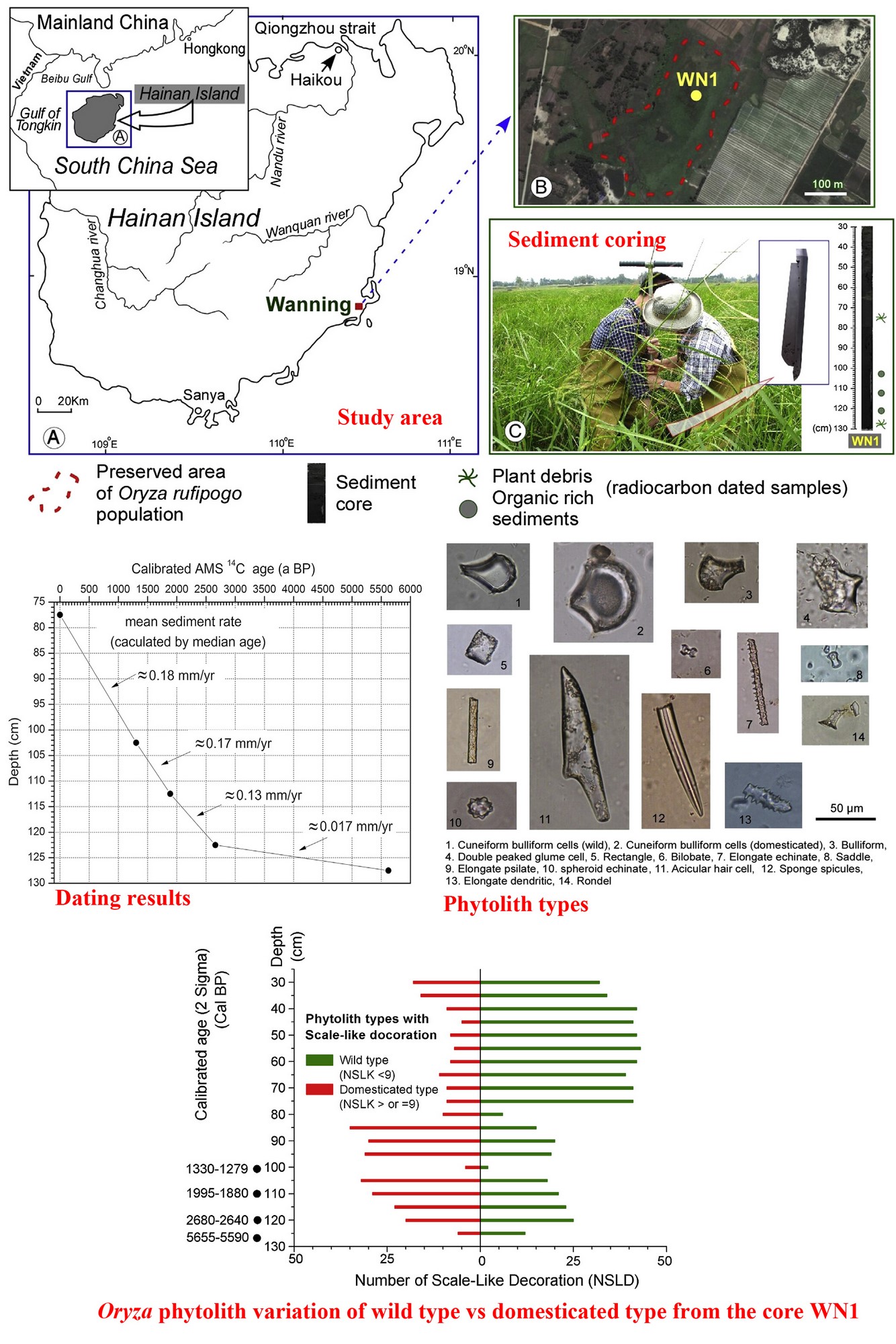Rice is one of the most important crops used to feed our global population. In China, rice has a long history of cultivation. According to archaeobotanical studies in the last decade, the Middle and Lower Yangtze River regions have been proved as the areas where rice was domesticated first. However, the prehistory of the domestication of rice in the tropical areas of South China is yet poorly understood.
Recently Dr. MAO Limi from Nanjing Institute of Geology and Palaeontology, Chinese Academy of Sciences together with the colleagues from Institute of Vertebrate Paleontology and Paleoanthropology, Chinese Academy of Sciences, reported phytolith evidence recovered from a sediment core in the central-east coast of Hainan Island, China, which indicates that domesticated rice might grow on the Hainan Island in 5600 cal a BP. The early timing of rice domestication on Hainan Island supports the hypothesis of the spread of rice agriculture from its origins in the Middle and Lower Yangtze River and its tributaries.
The new findings of phytolith evidence also highlights the practice of growing rice since 2000 years ago in the Lingnan region of the Nanyue Kingdom. The discovery of microfossil evidence such as phytoliths, starch and pollen grains should inspire more archaeological research focused on the origins and consequences of the spread of domestic rice agriculture to Hainan Island.
This work was part of the Strategic Priority Research Program lead by Chinese Academy of Sciences (CAS), and was jointly conducted by Institute of Vertebrate Paleontology and Paleoanthropology, Nanjing Institute of Geology and Palaeontology, Institute of Geology and Geophysics, Institute of Archaeology, and partially supported by LPS.

Download:
